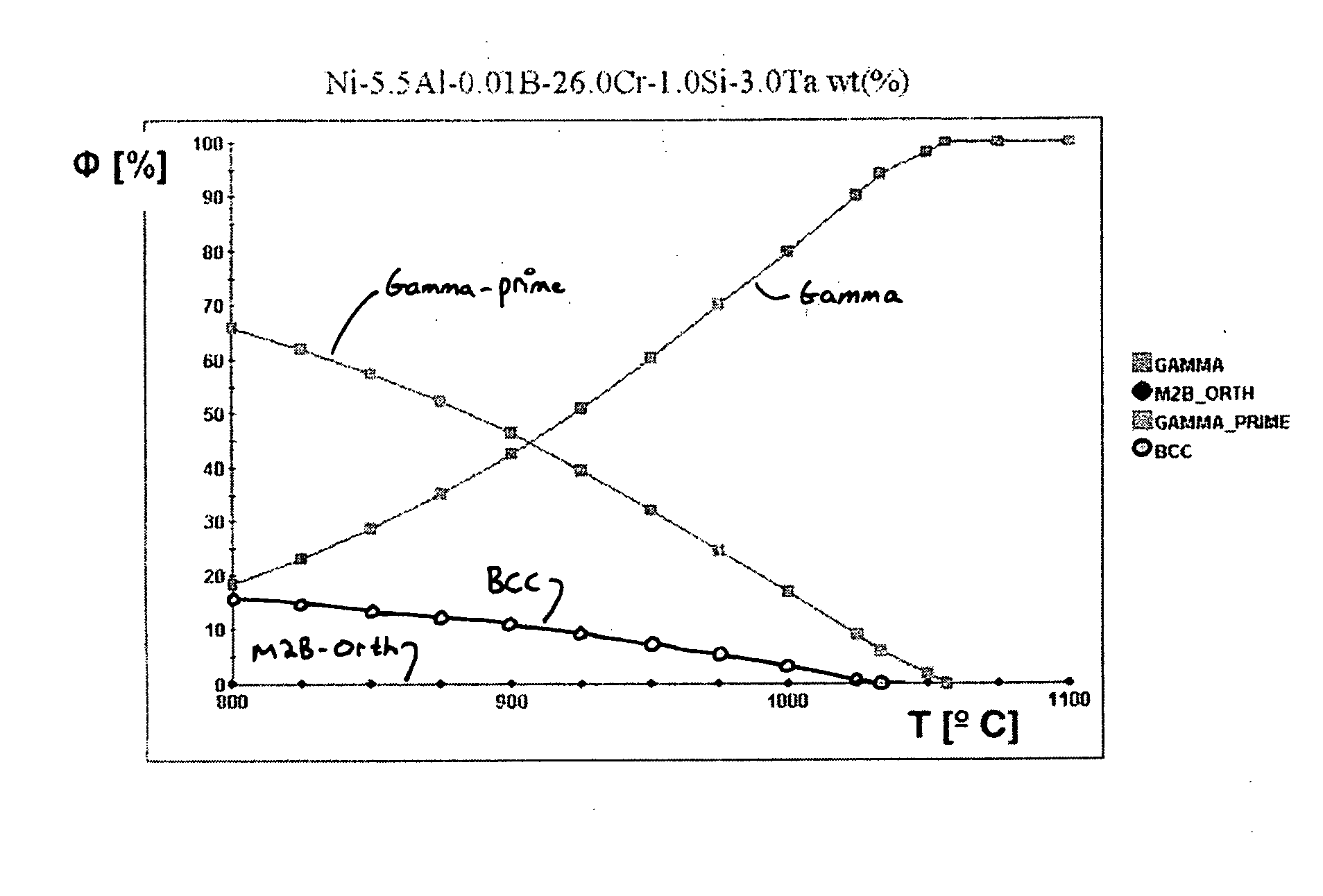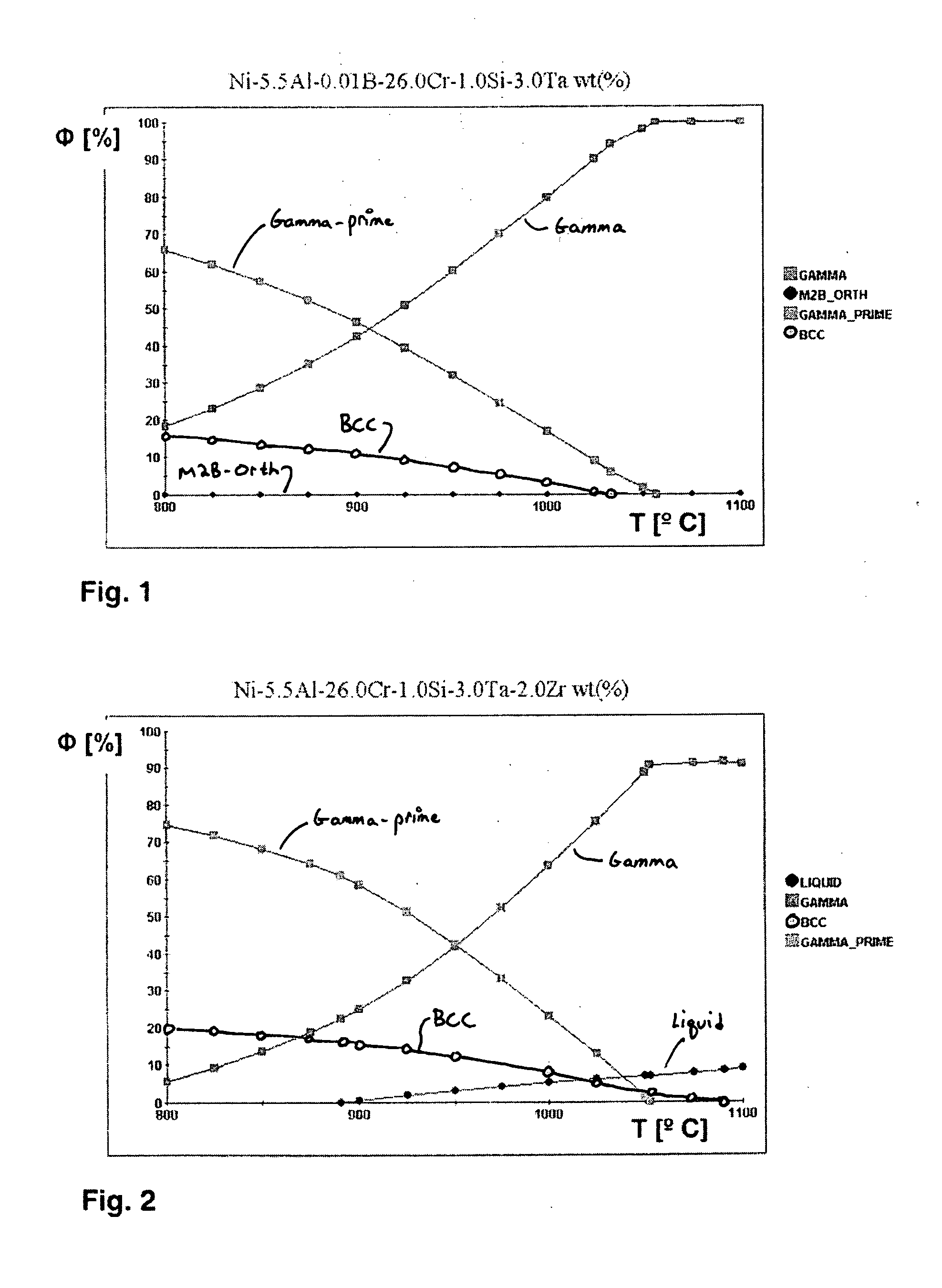High-temperature protection layer
a protection layer and high-temperature technology, applied in the field of high-temperature protection layers, can solve the problems of thermally activated phase transitions, microstructures with undesirable phases, and disadvantageously high volume proportions of - and/or -nial
- Summary
- Abstract
- Description
- Claims
- Application Information
AI Technical Summary
Benefits of technology
Problems solved by technology
Method used
Image
Examples
Embodiment Construction
[0023] The invention is explained in more detail on the basis of an exemplary embodiment, which describes the production of a coated gas turbine component or another component of a thermal turbomachine. The gas turbine component to be coated is made from an austenitic material, in particular a nickel superalloy. Before it is coated, the component is first chemically cleaned and then roughened using a blasting process. The component is coated under a vacuum, under shielding gas or in air by means of thermal spraying processes (LPPS, VPS, APS), high-velocity spraying (HVOF), electrochemical processes, physical / chemical vapor deposition (PVD, CVD) or another coating process which is known from the prior art.
[0024] An NiCrAlY alloy which, according to the invention, includes (% by weight) 23 to 27% by weight of chromium, 4 to 7% by weight of aluminum, 0.1 to 3% by weight of silicon, 0.1 to 3% weight of tantalum, 0.2 to 2% by weight of yttrium, 0.001 to 0.01% by weight of boron, 0.001 t...
PUM
| Property | Measurement | Unit |
|---|---|---|
| Temperature | aaaaa | aaaaa |
| Temperature | aaaaa | aaaaa |
| Temperature | aaaaa | aaaaa |
Abstract
Description
Claims
Application Information
 Login to View More
Login to View More - R&D
- Intellectual Property
- Life Sciences
- Materials
- Tech Scout
- Unparalleled Data Quality
- Higher Quality Content
- 60% Fewer Hallucinations
Browse by: Latest US Patents, China's latest patents, Technical Efficacy Thesaurus, Application Domain, Technology Topic, Popular Technical Reports.
© 2025 PatSnap. All rights reserved.Legal|Privacy policy|Modern Slavery Act Transparency Statement|Sitemap|About US| Contact US: help@patsnap.com


